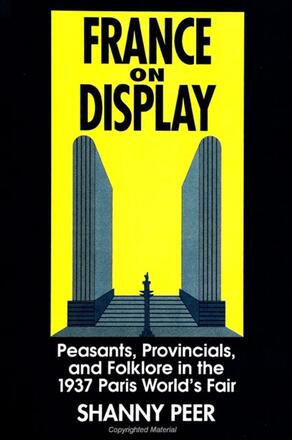
France on Display
Peasants, Provincials, and Folklore in the 1937 Paris World's Fair
Alternative formats available from:
Explores national identity in twentieth-century France.
Description
Winner of the 1999 Laurence Wylie Prize in French Cultural Studies presented by the Association for French Cultural Studies
The 1937 Paris World's Fair presented a traditionalist image of France as a rural, provincial country, faithful to its folk traditions and to its Old World heritage. France's attachment, well into the twentieth century, to its traditionalist roots has often been interpreted by scholars as a reactionary impulse, a desire to resist modernization or a wish to return to the past. However, in this book Peer argues that this enduring attachment in Third Republic France to peasants, provincials, and folklore was not inherently reactionary or anti-modernist. Instead, these aspects of France's "traditional" heritage were refashioned in new ways to allow France to modernize while still retaining its distinctive identity.
Shanny Peer is Assistant Professor of French Studies at New York University.
Reviews
"…an important contribution to the recent scholarly studies exploring the cultural and ideological functions of world's fairs … a fascinating and well-informed narrative … should therefore be necessary reading for scholars and students interested in twentieth-century France and issues of national identity in the contemporary world. " — The French Review
"The author uses the exposition of 1937 to explore several major historical issues. We learn how regionalism, the peasantry and folklore—the supposed essence of French tradition—were harmonized with modernity at the fair. We read how the Left, that is the Popular Front, managed to appropriate and reconfigure traditional symbols of collective representation that had been supposedly the prisoners of the Right. Peer shows us how the Popular Front, by trying to invigorate and 'nationalize' rural and regional life prefigured both Vichy and postwar renovation. She places the exposition's display in a longer historical context dating from the 1880s to the 1990s—ending with the controversy over the (supposed) threat posed by GATT to the peasantry and a French way of life. " — Richard Kuisel, State University of New York, Stony Brook
"This book gives the reader much more than simply a well-crafted account of the social, political, and cultural forces that made the 1937 Exposition. It also incisively explains their importance in the larger context of long-term French debates about national identity, rural life and folklore, regionalism and democracy. In sum, an important contribution. " — Charles Rearick, University of Massachusetts at Amherst
"This lively examination of some of the back-stage maneuvers and front-stage spectacles at the 1937 World's Fair provides a marvelous vantage point for a fresh look at ideas about the perils and promise of 'modernity. ' Peer masterfully weaves together large questions and colorful details, timeless issues and the nitty-gritty of interwar French political and cultural history. This visit to the Parisian Fair with her will be stimulating both for students of contemporary French history and for social scientists interested in the variegated processes of creating national identities in the modern world. " — Susan Carol Rogers, New York University